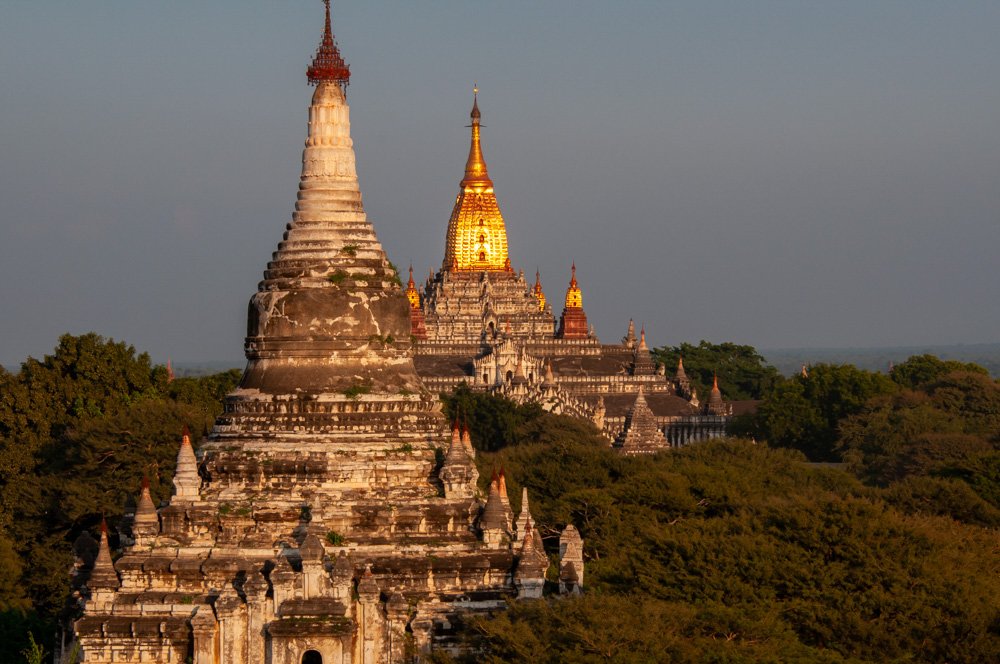Buddhism was being practiced in Burma (Myanmar) early in the first millenium, strongly influenced by Sri Lanka Theravadin Buddhism. However the first architectural representation of this form of Buddhist practice appeared in Pagan, or during the Pagan period which lasted from 1044-1287. During its zenith there may have been more than 13,000 stupas and temples dotting the 30 square km that was Pagan in the 11th to 13th centuries.
Temples built at the beginning of Pagan’s founding compared with Gupta Indian architecture, apprenticed by the Pyu at their capital in Sri Ksetra. The brick buildings which dated to before the building of temples in Pagan, indicate a direct architectural connection. Pagan art grew gradually from its Pyu foundations and the first stupa monuments come from this style. The Pyu of Sri Ksetra were defeated by a Chinese raid in the 9th century but their architecture, language and script survived. It’s reasonable to surmise they resettled in Pagan. Pagan was originally settled in around 107 AD by the Pyu bringing together their 19 adjacent villages. Anawrahta (1044-1077) was the first ruler of Pagan.
A biography from Sri Lanka written in the 5th or 6th century is supposed to by an important source for the Buddha’s life at Pagan, according to Donald Stadtner. It is called the Nidanakatha and is available online. It covers the period from his birth to his enlightenment.
The photo above shows TaBatKya Pagoda before the latest earthquake in front with Ananda Temple beyond. This photo was taken from Shwe Gu Gai Temple in 2009, which is a popular spot for taking photos. I saw a picture in Google Maps from 2019 where the top of the TaBatKya temple is no longer there.
The Temples
More will follow as I create more temple pages.
The Ananda (which was so-named in the 19th century) is Burma’s grandest temple. [Buddhist Art and Architecture, p. 184] But Ananda was only one temple and not the first. In all, according to UNESCO, “3,595 recorded monuments – including stupas, temples and other structures for Buddhist spiritual practice” [https://whc.unesco.org/en/list/1588]. Ananda continues to be a Buddhist center of worship, including the annual Pagoda Day on the Full Moon day of January.
Mi Nyein Gone – Massive single story structure with stairs leading up to the roofs. It was a very good place to begin our visit to the temples of Bagan.
Pya-Tha-Da Pagoda (Unfinished Pagoda) – Building was stopped by King Kyaswa (a Dhamma practitioner) who would not allow his “work of merit” to be built by people who were poorly paid and treated.
References:
Ancient Pagan: Buddhist Plain of Merit, Donald Stadtner, River Books, 2013
Pagan: Art and Architecture of Old Burma, Paul Strachan, Kiscadale Publications, 1989
Guide to Bagan Monuments by Min Bu Aung Kyaing, U Zaw Min Aye (Zaw Press), 2007
Inventory Of Monuments In Bagan, Pierre Pichard, UNESCO, 8 volumes, 1992-2001
